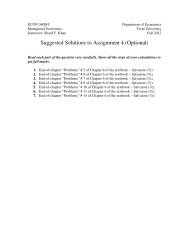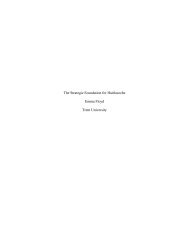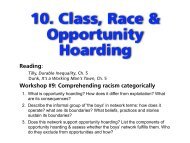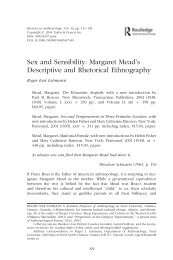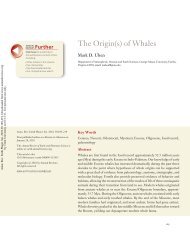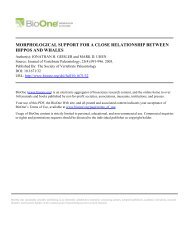REO FORTUNE'S PSYCHOLOGICAL THEORY OF CULTURAL ...
REO FORTUNE'S PSYCHOLOGICAL THEORY OF CULTURAL ...
REO FORTUNE'S PSYCHOLOGICAL THEORY OF CULTURAL ...
Create successful ePaper yourself
Turn your PDF publications into a flip-book with our unique Google optimized e-Paper software.
276 Pacifi c Studies, Vol. 32, Nos. 2/3—June/Sept. 2009<br />
While Fortune’s theory is detailed and provocative, with implications for<br />
both psychology and anthropology, it did not make much of an impression<br />
on either field. Mead (1972, 177) attributed this to Fortune’s using part of<br />
his fellowship funding to subsidize its publication as a trade book, such that<br />
it “never got any scientific hearing at all.” Social anthropologist Jackson<br />
Steward Lincoln (1935, 170) made no reference to it in his ethnological<br />
monograph on dreaming, though he did mention Fortune’s Omaha ethnography<br />
([1932b] 1969). Fortune himself, unfortunately, did not develop the<br />
ideas laid out in his book in his later writing, nor did he make explicit use<br />
of his theory in his own ethnographic work.<br />
In The Mind in Sleep, Fortune (1927, 4) analyzed several dreams in<br />
which repressed tendencies find expression, including when “an agnostic<br />
dreams with belief in Christianity, [and] a pacifist with hatred of former<br />
enemy nations.”<br />
Since remembered dreams are usually those that occur shortly before<br />
waking, when censorship has come into play, Fortune argued that in order<br />
to reach awareness they must escape censorship via three “methods of<br />
evasion” (1927, 21). Fortune called the first of these “surrogation,” in which<br />
a relatively repressed experience or attitude (the “submergent”) finds<br />
“subsequent expression by merging and confounding it with an object of<br />
less repressed” but otherwise similar feeling (“the surrogate”) (Fortune<br />
1927, 20). In other words, it is “the process of confounding submergent<br />
and surrogate by association through common affect” (Fortune 1927, 21).<br />
For example, in one dream Fortune recounted that his repressed hatred of<br />
Germany during WWI was expressed by links between studying in that<br />
country as a gesture of peace, and being in a hated former school.<br />
Fortune’s second method of evasion is “envelopment,” when a dream<br />
experience of an unrepressed attitude evokes the appearance of an affectively<br />
similar, repressed attitude. Fortune illustrated envelopment with one<br />
of his dreams in which he found himself in a library advocating agnosticism.<br />
This represented his waking views. However, his submergent Christianity<br />
appeared undisguised when a disturbance broke out, and he gave a speech<br />
on the virtues of Christianity as a way of quelling the disorder. He associated<br />
Christianity with an ordered and just universe, for which he longed in<br />
spite of contrary evidence. The repressed attitude, like a wolf in sheep’s<br />
clothing, moves freely among the flock of conscious propriety in the dream<br />
scenario, smuggled past the censor’s shepherd in its disguise of affective<br />
association with the uncensored attitude. Thus in envelopment, “the<br />
submergent obtains unsymbolic, undistorted release when the surrogate is<br />
confounded with [one’s waking views]” (Fortune 1927, 46).<br />
pacs-32-02-06.indd 276 9/7/2009 2:32:33 PM



